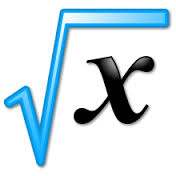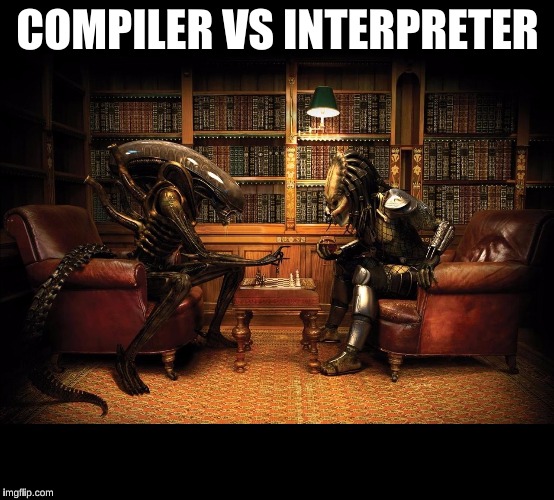Here is very basic description on what is an list (actually single linked list). I tried to describe things as simple as possible, sometimes skipping some details. This post is meant to be for people who just started programming.
My previous post was about an array, which is sometimes used for implementing a list data structure. The most important difference between these two is that array has fixed length and list has dynamic one.
List
List is a collection, so we use it to store more than one thing.
Intuitively you can think that list is a train:
 .
.
We use this train to store our boxes - we don’t care about their size. Because they can be big or small, in every train car we can store only one box. Starting from locomotive each train car is connected to the next one.
The same with list - it starts from node called head (locomotive). Head is connected with next element (next train car). Next element is connected with the next one, and so on… Speaking a bit more formally:
List is a collection of countable number of ordered values stored in nodes, in which each node is pointing to the next node.
What you can do with a list?
Let’s start on what we can do with a train? We can:
- create a train
- append a train car in which we want to store some box
- search for a specific box - find a train car in which it is
The same with list, we can:
- create a list
- append element to list
- search for specific element - we want to know its index (location)
In some programming languages string data type is implemented as list - it’s list of characters.
This time code examples are in Python, because in plain JavaScript there is no properly implemented list.
Create a list
In Python creating an empty list is very simple:
my_list = []We can also create a list with some initial elements:
my_list = ["a", "b", "c"]
print(my_list) # prints ["a", "b", "c"]Intuitively - it’s a train with 3 train cars - in the first one there is box with letter a, in the second one - b and in the third one - c.
Append to list
When we have a train it’s quite easy to append another train car with box
to it. We always append new train cars to the end of the train.
The same is when appending an element to list - in Python we use append
method for this (in other programming languages it can be also called
add or push):
my_list = ["a", "b", "c"]
my_list.append("d")
print(my_list) # prints ["a", "b", "c", "d"]Of course it’s possible to add an element in the middle of the list, but it’s not a standard list operation.
Append operation makes lists having dynamic length, because we can change size of this structure.
Search list
We sometimes want to know in which train car is one of boxes.
For list we can also check
on which index it’s a certain element. In Python there is index method
for this:
my_list = ["a", "b", "c"]
i = my_list.index("a")
print(i) # prints 0, because "a" is the first element in my_list
my_list.index("d") # ValueError: "d" is not in listWe can also check what we have in certain train car. In list, elements are enumerated starting from 0 - the same as in arrays.
my_list = ["a", "b", "c"]
i = my_list[0]
print(i) # prints "a", because "a" is the first element in my_list
my_list[5] # IndexError: list index out of range
Beware that get operations aren’t in standard library in all languages, for example in C++ or Erlang we always have to search for element by looking to all elements starting from the head of the list.
List in different programming languages
Lists are implemented in many different manners. Here are some examples from objective and functional languages.
Java
There are a few ways of creating an array in Java, I think this is the simplest one:
List myList = Arrays.asList(1, 2, 3);
myList.get(1); // returns 2 because it's the second elementbut the downside is that it cannot be modified (it’s a immutable list). Thanks to Jakub Dyszkiewicz for pointing that out!
The other way:
List myList = new ArrayList();
myList.add(1);
myList.add(2);
myList.add(3);
System.out.println(myList.get(0)); //prints first element: 1This time myList is mutable, so we can add elements after it is created.
I will not cover here more about mutability and immutability, but
it’s an interesting topic - maybe in future posts?
C#
C# is quite similar to Java:
List<string> myList = new List<string>();
myList.Add(1);
myList.Add(2);
myList[1]; // returns 2, because it's the second elementC++
C++ is one these languages which doesn’t provide a special method for accessing elements of a list - we have to iterate over this structure, it’s not covered in an example.
std::list<int> mylist;
mylist.push_back(1);
mylist.push_back(2);
mylist.front(); // access the first elementErlang
In functional paradigm lists are very useful - I can even say they are the core of functional programming. They are still the same data structure, but we don’t think about indexes at all. The truth is that lists are completely not about indexes. We treat list as structure which has a head and a tail - head is our locomotive (and the first train car in the same time) and tail is the rest of the train.
L = [1,2,3],
L1 = [4|L] %% we can append easily to the beginning of the list
%% L1 is [4,1,2,3]
%% this is called pattern matching:
[H|T] = L1
%% H is 4 and T is [1,2,3]Further reading
There are more interesting operations on lists like:
- filter
- map
- reduce (or fold)
You can also read a documentation on lists in your favorite programming language. Also it’s nice to read a bit what is pattern matching and list comprehensions. I think it’s also good to know more on mutability.
If you have any questions - leave a comment!
Difference between array and list
If you’ve read a previous post about arrays then you probably noticed some similarities between array and list, so I want to describe what are the differences between them. Remember, array was intuitively a shelf with drawers.
Length difference
The most important difference between these two is that array has fixed length and list has dynamic one.
It means that we cannot change a size of an array - it’s hard to add a new drawer to an existing shelf! We would actually need to buy a new shelf and put all our drawers into it (for changing a size of an array our program needs to reallocate memory). On the other hand it’s easy to append new train car to a train - the same as it is easy to append new element to list.
Accessing time difference
There is also difference in time which is needed for certain operations - for example if we have a very very long list, accessing its last element probably will take much more time than accessing last element of an array of the same length.
That’s because in list we always start from the beginning and in array we can easily count which place in computer memory should be accessed. More intuitively: list is a train, so as a conductor we have to walk from train car to next train car and a next one and next… On the other hand array is a shelf with drawers, that’s why we can easily find a drawer even when shelf is really big.
Summing up
Hopefully you understand, what is a list and why it works this way. You also have seen some examples in other programming languages and you are aware that list can look in very different manners. Also you know a bit about the differences between arrays and lists.
Next time we will try to understand what is a data structure called binary tree!
Having some thoughts? Leave a comment!




Leave a Comment